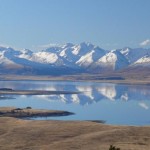Technical
Our Off Grid Homes are sustainable stand alone zero energy buildings that are not reliant upon a utility company. To achieve this objective our homes are energy harvesting machines in which people live. Our buildings employ simple low-cost strategies so that they will function in a low carbon future. We incorporate renewable energy generation technology and energy storage capability as standard. Our cohesive designs also enable us to deliver a high standard of passive cooling.
Passive energy systems are the only option for the future but the technology needs to be integrated into structure if it is to be cost effective. In the future every home will need to meet the needs of its occupants.
There is not one example of a modern community that functions without the support of companies that are built around or trade in fossil fuels. Within 20 years many countries will be unable to provide their people with the energy that they have come to expect. Most people like to believe that life will only get better and prefer to ignore any facts that are unpleasant. Nothing is being done to prepare for that day.
We have prepared designs that will function in all climatic zones other than the Polar Regions. Some are designed to function in cold climates, where day lengths are short and where sun angles are low. Others are designed for warmer climes where temperatures are often high and the sun is directly overhead at midday.

A sustainable home has to have a simple shape if it is to have a low embodied energy content.
Passive solar buildings need to have a simple compact shape to reduce their surface area. Our designs are usually built around a cube which supports one or more solar collectors and often a cooling wall. The solar collectors must face the equator to achieve the highest possible level of passive solar gain. The solar collectors and cooling walls, if they are present, always form a large part of the external envelope. It is rare for us to place windows in north or south elevations. The windows in the east and west elevations are strategically placed for maximum light interception. These requirements mean that it is impossible to build a zero energy building that looks “traditional”.
Although the sun would seem to be a sustainable source of energy its actual daily availability is uncertain in most areas. Architects and Engineers are generally of the belief that solar collectors should be part of the living space rather than a primary source of energy. When we build a home we always separate the solar collectors from the inhabited parts of buildings. Some of the solar energy that is harvested by the collectors is used as soon as it available but most of it is stored for later use. The stored heat is then be disseminated via the ventilation system when it is required.
Air barriers, sealed construction joints, and sealed service penetrations ensure that our buildings are airtight. If our building were not airtight then the heat recovery system that we install as standard will not function. The heat recovery systems extract the heat and coolth that is present in the stale air that is about to be discharged from the building and transfers it to fresh incoming air. Our homes are so thermally efficient that the internal air temperature changes very slowly even when the ventilation system is switched off and the house unoccupied.
Most people like to sleep in a cool bedroom. To make this possible we insulate the internal walls and then we provide small vents in the internal bedroom walls which can be opened at night. Any vents which pass through external walls are fitted with insulated covers that can be sealed shut during the day or during extreme weather conditions.





